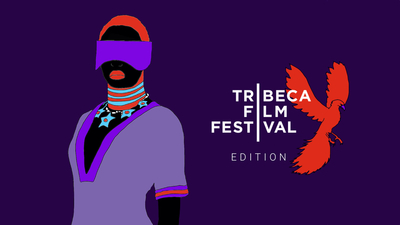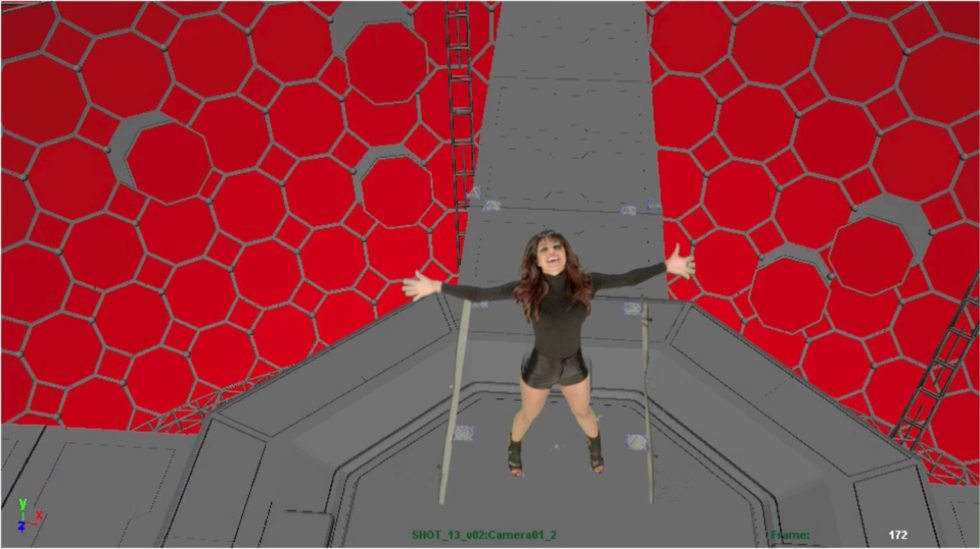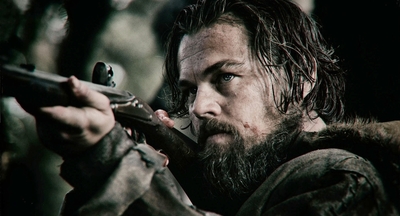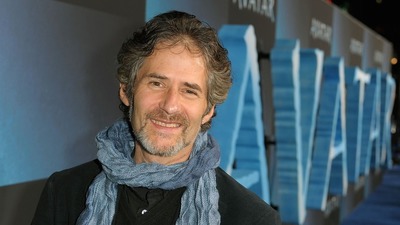
BY THE EDITORS |
Director Kevin Robinson Takes Us Behind the Scenes of the New NFL Broadcast Open With Priyanka Chopra
Juniper Jones founder Kevin Robinson shares the pitfalls and triumphs of creating the new NFL Thursday Night Football broadcast open.

The new Thursday night NFL pre-show with Priyanka Chopra on CBS has gotten a lot of attention lately. At Tribeca we’ve had a special interest in the project because it was done by the creative team behind the 2012/2013 Tribeca Film Festival pre-show.
Based in DUMBO on Brooklyn’s waterfront, Juniper Jones is a creative team developing solutions for film and television. We reached out to Juniper Jones Creative Director/Founder Kevin Robinson to get a behind the scenes look at the process of these new projects.
Tribeca: The (Festival) pre-show is a difficult project to balance because it needs to be entertaining, informative, and still allow for a good relaxing experience prior to the films. What was your process last year?
Kevin Robinson: Since the audience of the Festival represents people who appreciate film and because many of them see multiple films, we worked with the internal creative team at Tribeca to create something that still feels new no matter how often you see it. To accomplish that, we filmed a mass amount of footage around NYC using the three-dimensional logo which Tribeca’s team created for the print campaign. Using that as inspiration we created an adaptable graphic package that could give us a stylish storytelling approach and a system that could inform viewers about everything that’s happening around the Festival.
2013 Tribeca Film Festival Pre-Show Teaser from Juniper Jones on Vimeo.
Tribeca: Tell us about your latest projects.
JJ: Recently we were selected by the NFL Network and MAGGIEVISION Productions (MVP) as their key partner to create the 2013/2014 “Thursday Night Football” broadcast open starring Priyanka Chopra. The custom project toolkit we delivered allows the network to give each host city a version of each “Thursday Night Football” spotlight featuring Priyanka.
NFL Network "Thursday Night Football" 2013/2014 Open from Juniper Jones on Vimeo.
Usually when there is a lot of 3D in a project, it’s very hard to also make it adaptable. So in forming the idea for the spot, this was at the forefront of our minds. We landed on creating a huge concert-type of venue made almost entirely of LCD screens. Priyanka lands in the center of the action as we feed different footage and graphics through the screens.
Tribeca: Have you done a project this before? What were the pitfalls in this kind of process?
KR: We have done spots like this before - our most famous one was something we did for Turner Classic Movies’ 31 Days of Oscar promotion, which also had screens showcasing footage. The trouble with that project came when a movie clip changed, because then we had to go back to 3D, render, and then re-composite in After Effects… a process that can easily take several days. Learning from that experience, we devised a workaround by creating a new workflow where changing a clip takes minutes, not days.
Tribeca: Storyboard is often the forgotten step in taking a script to the screen effectively. Can you walk us through that process?
KR: We began by creating concept art, storyboards, and an animatic (essentially, storyboards laid out over time to make sure it fits the song and allotted time). We had about three weeks to work out a concept and develop it before shooting took place.
 After the storyboarding, in order to really make sure the production will deliver on the level of visual fantasy we want, we create concept art. This becomes extremely important when working in 3D, to give the modelers and animators a guide. It’s like having blueprints before building a house. The architect behind this imaginative dome was Justin Yu of Section Studios, who helped us envision how this environment would look and work logistically.
After the storyboarding, in order to really make sure the production will deliver on the level of visual fantasy we want, we create concept art. This becomes extremely important when working in 3D, to give the modelers and animators a guide. It’s like having blueprints before building a house. The architect behind this imaginative dome was Justin Yu of Section Studios, who helped us envision how this environment would look and work logistically.


Then an art director created rough models in 3D and built a couple frames to showcase the overall look.

Tribeca: Walk us throught the green screen process for this project.
KR: We shot Priyanka on a huge green screen with multiple tracking markers. The turnaround time on the backend of the production was only three weeks - so we had to be able to track the shots quickly. In order to get good tracks you need to have lots of parallax or foreground objects that move faster than background objects when there is movement. Moving into production we compiled a team to create the 3D environment in Maya, composite the renders in After Effects CC and animate the supporting graphics into the LED screens. This was somewhat tricky, since the spot is dependent upon choreography between Priyanka, the graphic animations, camera moves, and NFL footage. In order to strike the right balance, it took some trial and error.



Tribeca: What was the biggest technical challenge on the project?
KR: The majority of the lighting and reflections came from footage that's changing on a weekly basis, so to make that work, we needed the entire project to live in After Effects. So in Maya, we rendered out multiple UV passes - UV is the information needed to texture a 3D object - and in After Effects there is a new plugin by RE:Vision called RE:ReMap. This allowed us to apply the footage in After Effects and also allowed for us to apply the reflection to the metallic platform almost in real-time. After delivering the first week’s open, we created a toolkit to be able to update the open in the 11 weeks to follow. This made it possible for them to basically work out an edit in Avid just like any other spot, and then pump that edit into the After Effects toolkit. From there they are able render the spot within a couple of hours.
Tribeca: You've also recently created a promo for Lifetime's The Witches of East End. How was that project different?
KR: On this project there was an added challenge. Because of talent availability and scheduling, we could primarily only shoot during the day, yet most of the promo takes place at night. With this problem in mind, director of photography Martin Ahlgren and I discussed various ways to create the right feeling for the promo. We ended up shooting ‘day for night’ during the afternoon, then dusk as the sun was setting, and the final sequence was shot at night.
Making of "Witches of East End" Cinema Spot from Juniper Jones on Vimeo.
In the ‘day for night’ process, heavy lighting is used to overpower the sunlight, and you shoot with filters and at lower exposures. This brings the look of the cinematography closer to night. Once we received the raw footage, we color corrected very intensely to push back the backgrounds and make all the witches feel integrated. Many hours of clean-up were needed to get the final plates where we wanted them to be. We even added a different darker lake to certain shots.


Using Fume FX, we created iterations of fire, smoke and heat haze to make the overall story come to life. While we did shoot plates on set and a couple of small fire setups with talent, it was still a situation of having 90% of the spot created in post. VFX pro Allen McKay and a supporting pyrotechnic crew matched the 3D fire to the real fire.

While these two spots may seem very different from what we have done for the Tribeca Film Festival over the past two years, at their core is a consistent approach. When creating custom-tailored solutions, we always begin by looking very closely at the brand and the brand’s audience. For NFL Network, their brand is high-tech and they showcase the spot on a weekly basis - hence a futuristic environment that was easily adaptable. For Lifetime, it’s a brand new show and they need people to tune in. That spot is also running in cinemas, so it needed to feel ‘cinematic’ and dispel the myth that Lifetime is still just about “Lifetime Original Movies.”
(To learn more about Juniper Jones, visit their site.)

